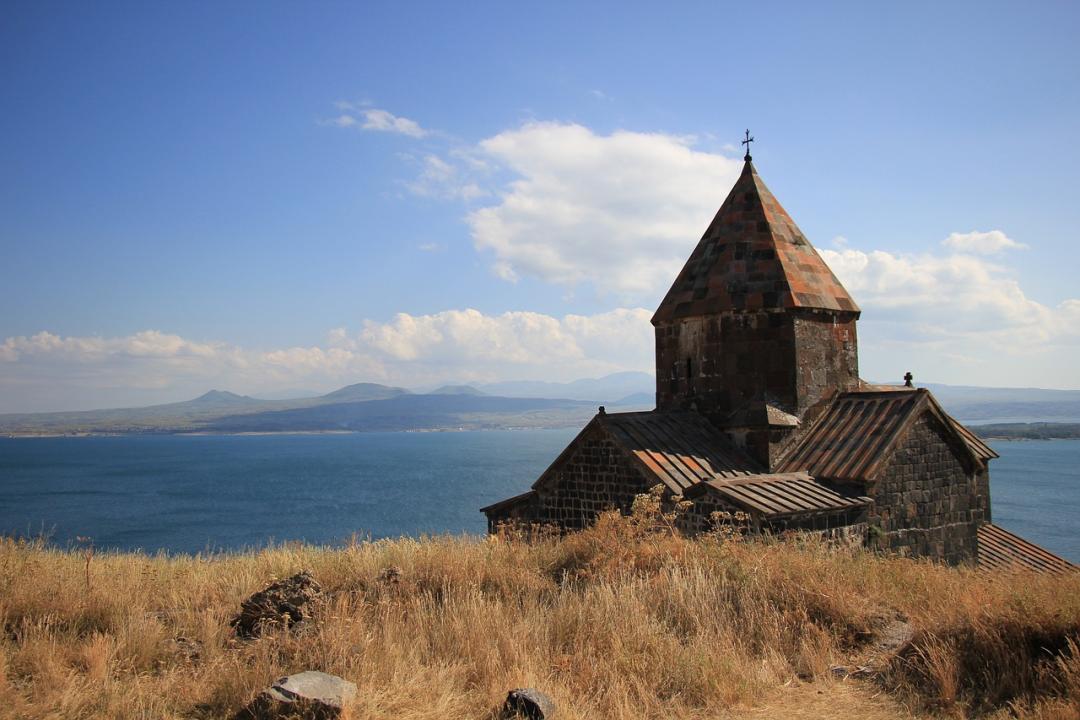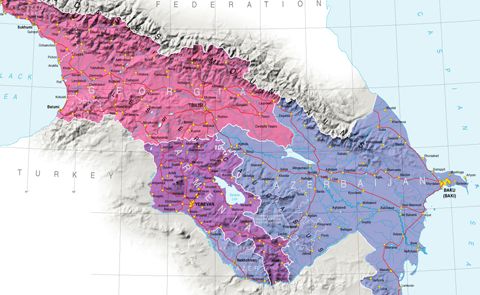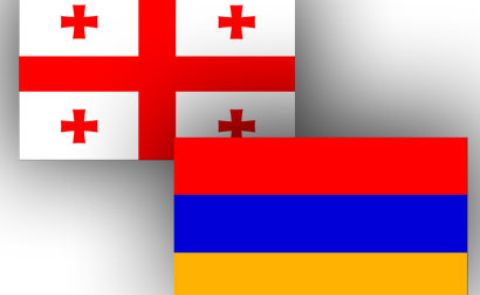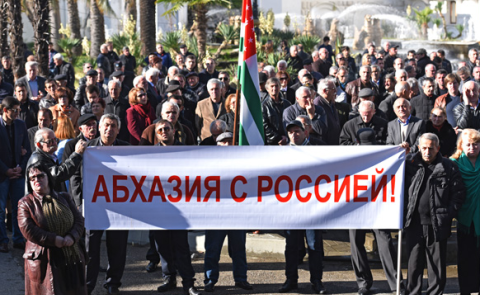
From Neorealism to Neoliberalism: Armenia’s Strategic Pivot in Foreign Policy After the Nagorno-Karabakh Conflict

Introduction
Small states, constrained by limited military and economic capacities, often face acute vulnerabilities and are highly sensitive to internal and external pressures. To navigate these risks, they typically adopt one of two strategic approaches: self-reliance through neutrality or alignment with stronger powers via military alliances or bandwagoning. While these strategies aim to secure sovereignty and influence, they carry significant risks. Driven by a neorealist foreign policy, Armenia’s prolonged reliance on Russia—without diversifying its security partnerships—resulted in strategic rigidity. This vulnerability was starkly exposed during the Second Nagorno-Karabakh War in 2020, when Azerbaijan, supported by its military ally Turkey, exploited Armenia’s constrained security architecture.
Neorealism, or structural realism, posits that in an anarchic international system, states prioritize survival through power accumulation and strategic alliances. Armenia’s longstanding dependence on Russia and the Collective Security Treaty Organization (CSTO) reflects this logic. In contrast, neoliberalism emphasizes institutional cooperation, economic interdependence, and shared norms. Armenia’s recent efforts to reconcile with historical adversaries, Azerbaijan and Turkey, and to expand international partnerships signify a deliberate pivot toward a neoliberal framework.
This article explores Armenia’s foreign policy transition from neorealism to neoliberalism, focusing on its evolving relationships with Azerbaijan and Turkey after the Second Karabakh War, the re-evaluation of its military alliance with Russia, and the diversification of partnerships with Western institutions.
Neorealist Paradigm: Expectations and Realities
Following its declaration of independence on September 21, 1991, Armenia regarded Russia’s military presence as foundational to its national security. Despite the military defeat in Nagorno-Karabakh and Russia’s passive stance during the conflict, some of Armenia’s political elite continue to view Russia as a key pillar of national security. “The alliance with Russia remains the only guarantee of sustainable security for Armenia,” stated former President Robert Kocharyan at a press conference on February 11, 2022. Armenian officials have traditionally viewed Russian troops, particularly those stationed at the 102nd Military Base in Gyumri—Armenia’s second-largest city, near the Armenian-Turkish border—as a deterrent against potential Turkish military intervention. The base, formerly the Soviet 127th Motor Rifle Division, hosts approximately 3,000 troops and operates within the Commonwealth of Independent States’ joint air defense network, supporting Armenia’s limited air capabilities with MiG-29 fighter jets deployed since 1995. The joint Russian-Armenian air defense system monitors airspace using combat aviation and air defense units. Yerevan’s membership in the CSTO, a Russia-led defense pact, provided access to discounted or free Russian arms and weapon systems. Thus, the presence of Russian military forces on Armenian territory has been a cornerstone of Yerevan’s neorealist foreign policy, addressing its security dilemma stemming from limited economic and military capabilities compared to Azerbaijan and its powerful ally, Turkey. In this context, Armenia, as a small state, engaged in a classic external balancing strategy to offset its structural vulnerabilities in the regional security environment.
However, the Second Karabakh War and subsequent geopolitical developments exposed flaws in this strategy. Russia’s reluctance to take meaningful action during the conflict, combined with the CSTO’s failure to respond to Azerbaijani incursions into Armenia’s sovereign territory in May 2021 and September 2022, severely undermined the alliance’s credibility, highlighting the ineffectiveness of the collective security guarantees enshrined in Article 4 of the CSTO treaty. “Armenia invoked Article 4 of the CSTO, requesting military assistance to restore the country’s territorial integrity,” Prime Minister Nikol Pashinyan addressed Parliament on September 14, 2022, amid an Azerbaijani incursion. Neither the CSTO nor Russia, despite its military presence in Armenia, provided military or significant political support to their embattled ally. This fallout culminated in Armenia freezing its CSTO participation in February 2024 and formally announcing its intention to exit in June. These developments underscored the fragility of alliance-based security and prompted a fundamental reassessment of Armenia’s foreign policy doctrine.
Neoliberal Turn: Diplomacy, Connectivity, and Cooperation
Following its military defeat and diplomatic isolation, Armenia has recalibrated its foreign policy toward a cooperative, institution-based approach. A key example is its growing engagement with the revitalized 3+3 regional cooperation format, which includes Armenia, Azerbaijan, and Georgia, alongside regional powers Russia, Iran, and Turkey. Prime Minister Nikol Pashinyan’s unveiling of the “Crossroads of Peace” initiative at the Silk Road Forum in Tbilisi in October 2023 marked a symbolic and strategic shift. The project envisions regional connectivity through infrastructure development—railways, pipelines, roads, and communication networks—linking Armenia with Turkey, Azerbaijan, and Iran. This initiative exemplifies a neoliberal approach rooted in economic interdependence and regional integration.
Armenia’s embrace of active diplomacy to protect national security is evident in its efforts to sign a comprehensive peace treaty with Azerbaijan and normalize relations with Turkey. At the European Political Community summit in Granada, Armenia committed to mutual recognition of territorial integrity and border delimitation. “Peace means normalization of relations with Azerbaijan and Turkey,” Pashinyan affirmed, presenting diplomacy as a proactive means to secure long-term stability. Even during Azerbaijan’s so-called counter-insurgency operation—effectively an act of ethnic cleansing against the Armenian population of Nagorno-Karabakh on September 19, 2023—Armenia remained passive, observing as Azerbaijan seized the remaining territories within the Russian peacekeeping zone. “One objective of this process is to involve Armenia in military activities. This is a challenge aimed at creating chaos in Armenia, and the fact that a ceasefire has been established in Nagorno-Karabakh does not mean these goals are off the agenda,” Pashinyan stated in a public address on September 21, 2023. He added that Azerbaijan’s policy of ethnic cleansing and the failure of the Russian peacekeeping contingent bore full responsibility, noting that the Armenian-Russian strategic partnership was “insufficient to ensure Armenia’s external security.”
These military and political developments have prompted Armenia to reassess its national security priorities, defense policy, and approach to deterrence. The government is increasingly adopting a neoliberal strategy emphasizing peacebuilding, economic interdependence, and diplomacy in its relations with Azerbaijan and Turkey. Yerevan has deliberately minimized its military posture to avoid provoking Azerbaijan and foster a stable regional environment. Notably, Armenia has refrained from military responses despite increased Azerbaijani ceasefire violations along shared borders. In March 2025, Pashinyan publicly ordered the Ministry of Defense to uphold the ceasefire and avoid escalation, reinforcing his administration’s commitment to peace. “The draft peace treaty between Armenia and Azerbaijan has been agreed upon and awaits signing. My clear instructions to the Ministry of Defense are to avoid ceasefire violations. Armenia is moving toward peace, not war,” Pashinyan wrote on his Facebook page on March 19.
Strategic Diversification in Economy and Challenges
At the heart of Armenia’s neoliberal pivot is a concerted effort to diversify foreign partnerships. Moving beyond Moscow’s orbit, Armenia has deepened ties with the European Union through the Comprehensive and Enhanced Partnership Agreement (CEPA), which promotes democratic governance, economic reform, and the rule of law (European External Action Service, 2021). Economic diplomacy has gained prominence, with Armenia’s burgeoning IT sector attracting major firms like Google and Amazon and hosting high-profile events such as the World Congress on Innovation and Technology in October 2024. This emphasis on global market integration aligns with neoliberal principles of peace through prosperity and connectivity.
Despite these advancements, Armenia’s foreign policy transformation faces significant challenges. Russian influence persists through military installations and economic ties. In 2024, bilateral trade with Russia reached $12 billion, bolstered by cooperation within the Eurasian Economic Union (EAEU). Russian Foreign Minister Sergey Lavrov described this partnership as a “cornerstone of regional stability.”
Domestically, the transition is contested. Nationalist factions view rapprochement with Azerbaijan and Turkey as a betrayal of national interests. The success of Armenia’s neoliberal strategy hinges on delivering tangible benefits to counter political backlash. This is increasingly difficult for the Pashinyan administration, given the lack of progress in normalizing relations with Turkey, the absence of a signed peace treaty with Azerbaijan, and rising ceasefire violations by Azerbaijan’s armed forces.
Externally, the threat of hybrid warfare looms large. Since the 2018 Velvet Revolution, Russia has engaged in disinformation campaigns and political interference to destabilize Armenia’s pro-Western trajectory. These efforts may intensify ahead of the parliamentary elections in June 2026. Speculation persists that Moscow could tacitly support Azerbaijani military aggression to undermine Pashinyan’s government and discredit its neoliberal, peace-oriented policies.
Conclusion
Armenia’s shift from a neorealist to a neoliberal foreign policy framework marks a profound transformation in its national strategy, defense policy, and perception of deterrence vis-à-vis Azerbaijan and Turkey. This realignment reflects not only a tactical adaptation to regional upheavals but also a broader redefinition of Armenia’s role in regional and international systems. Whether this pivot endures will depend on the success of peace initiatives with Azerbaijan, the effectiveness of domestic economic reforms, and the government’s ability to manage internal dissent and external subversion from Russia. By replacing dependency on Moscow with economic diversification and confrontation with cooperation, Armenia is embarking on a bold but uncertain path toward a more secure and integrated future. The success or failure of Yerevan’s neoliberal policies will largely depend on the global and regional military-political situation—particularly the actions of key regional powers, namely Russia, Turkey, and Iran—and whether they lean toward cooperation or competition.
By Mikhail Mkrtchian, Regional Security Analyst
See Also


3+3 Initiative as a New Order in the South Caucasus

Economic Cooperation Between Armenia and Georgia: Potential and Challenges Ahead

Russia and Occupied Abkhazia: A New Type of Relations

Georgia and US: From Close Ties to Caution

